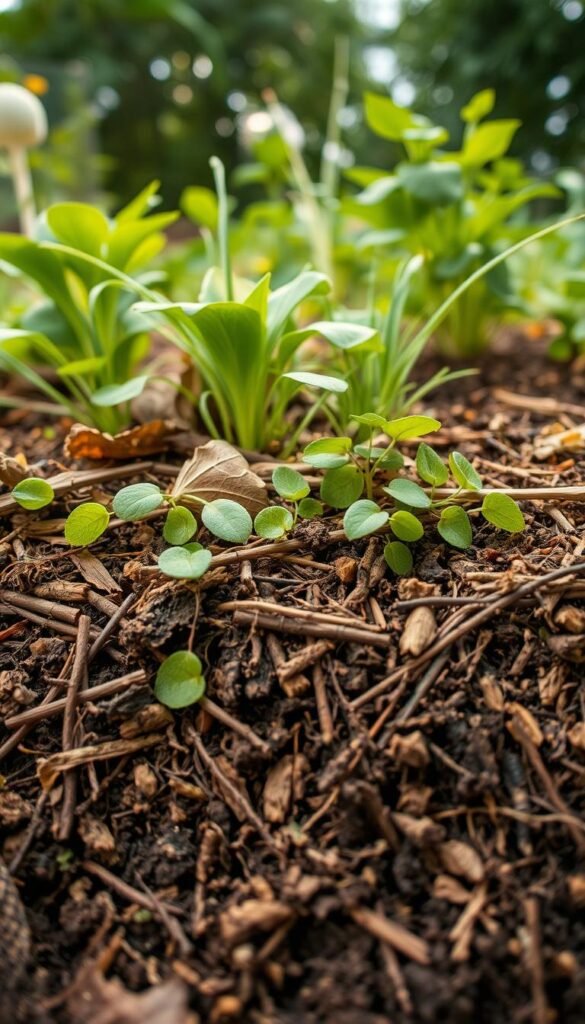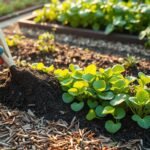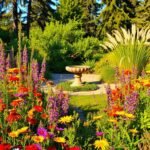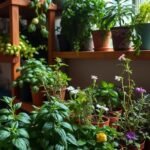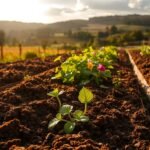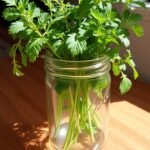Imagine growing vibrant plants with less effort while nurturing your garden’s hidden ecosystem. No-dig methods focus on working with nature, not against it, by layering organic materials like compost and mulch. This approach protects the delicate web of life beneath the surface, fostering healthier crops and a thriving environment.
By adding nutrient-rich materials directly to the top layer, you feed beneficial microbes and earthworms. These tiny helpers break down matter, releasing nutrients gradually. Over time, this creates a fluffy, fertile base that retains moisture and resists erosion—key for gardens in dry or rainy areas.
One major perk? These beds can hold 30% more water during droughts compared to tilled soil. Plus, reduced weeding and higher yields—some gardeners report plants doubling in size! If you’re curious how this stacks up against traditional techniques, compare no-dig and traditional gardening methods to see the difference.
Ready to transform your space? In the next sections, we’ll break down simple steps to build your own productive, low-maintenance beds. From choosing materials to seasonal tips, you’ll learn how to let nature do the heavy lifting.
Introduction to Regenerative No-Dig Gardening
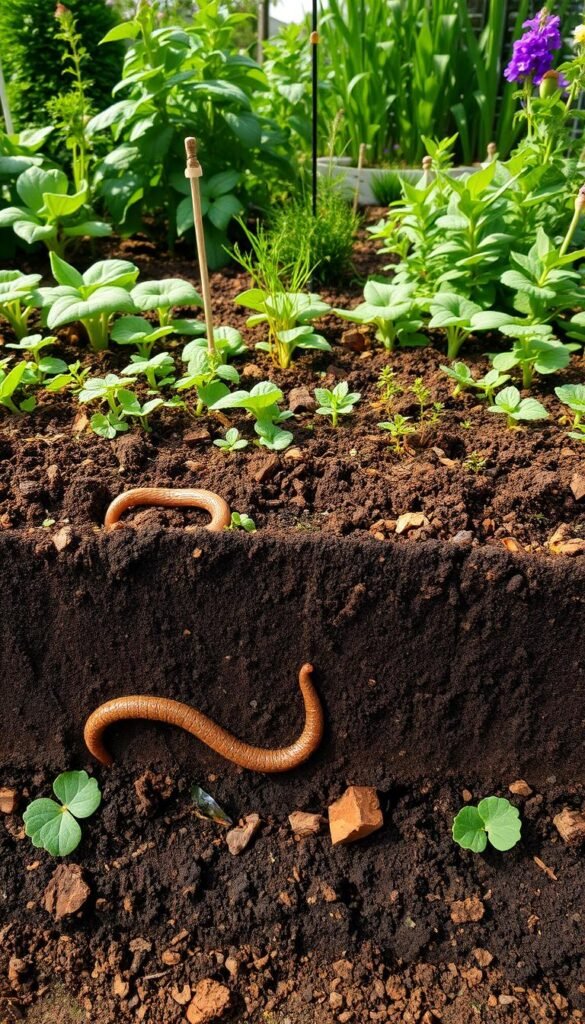
What if your garden could thrive without ever turning a shovel? Regenerative no-dig methods flip traditional gardening practices by focusing on what happens above the ground to heal what’s below. Instead of disrupting ecosystems with tilling, you build resilience through layered organic materials—like compost and mulch—that feed life underground naturally.
Understanding No-Dig Principles
At its core, this approach protects the delicate balance of your garden’s foundation. Tilling breaks apart soil structure, destroys helpful fungi networks, and exposes buried weed seeds. By skipping the shovel, you preserve moisture, encourage earthworms, and let microbes recycle nutrients efficiently. Over time, this creates a self-sustaining habitat where plants grow stronger roots and resist pests.
The Rise of Regenerative Gardening Practices
Urban growers and small-scale farmers alike are adopting these methods for their simplicity and results. A 2022 survey found 68% of home gardeners reported fewer weeds and healthier crops after switching to no-dig systems. Key reasons include:
| Traditional Gardening | Regenerative Approach | Impact |
|---|---|---|
| Frequent tilling | No soil disruption | Preserves microbial life |
| Bare soil between plants | Continuous mulch cover | Reduces water needs by 40% |
| Annual replanting | Living root systems year-round | Boosts carbon storage |
For those curious about the science behind these methods, exploring the no-dig versus double-dig debate reveals why minimal disturbance leads to maximum growth. As you’ll discover in later sections, success lies in mimicking nature’s rhythms—not fighting them.
Enhancing Soil Health and Structure
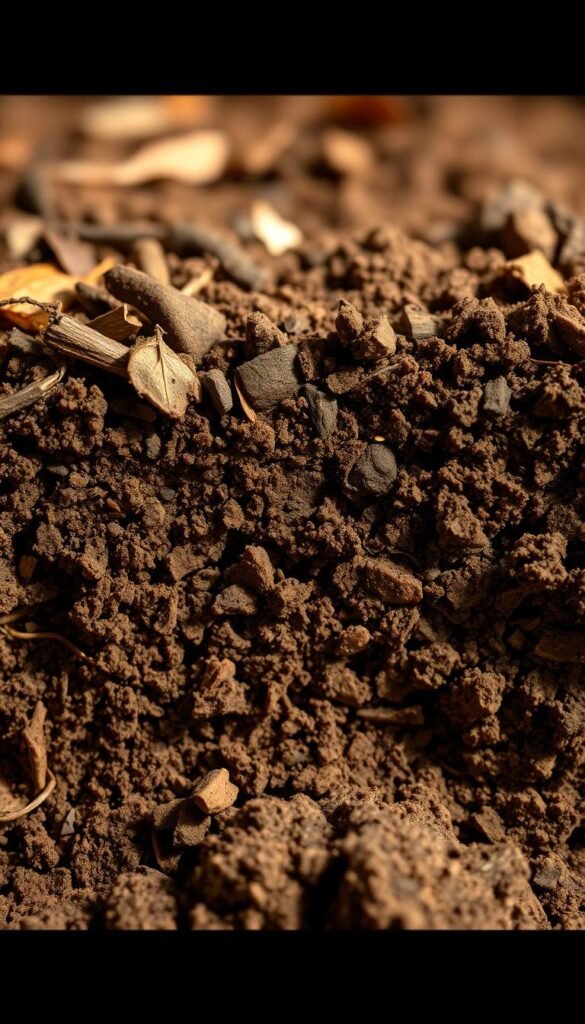
Ever wonder what makes a garden truly flourish beneath the surface? It starts with nurturing the foundation—where organic materials and tiny organisms work together to create ideal growing conditions. By focusing on soil health, you unlock better plant vitality and harvests without synthetic shortcuts.
The Role of Organic Matter and Compost
Adding compost regularly is like serving a nutrient-packed meal to your garden. It restores soil structure by binding particles into crumbly clusters, allowing roots to spread easily and water to soak deep. Studies show gardens with 2-3 inches of compost annually see 45% fewer drainage issues.
Earthworms thrive in these conditions, tunneling through layers and leaving behind fertile castings. For best results, try the no-dig planting method—simply layer compost over beds instead of mixing it in. This protects delicate fungal networks while feeding microbes.
Boosting Microbial Activity Naturally
Microbes are nature’s recyclers, breaking down leaves, grass clippings, and kitchen scraps into plant-ready nutrients. To keep them active:
- Mix diverse organic matter like straw and shredded bark
- Avoid chemical fertilizers that harm beneficial bacteria
- Maintain moisture with mulch to create a microbial haven
Healthy microbial populations can double nitrogen availability in just one growing season. Over time, this living ecosystem becomes self-sustaining—reducing your workload while boosting yields.
Implementing No-Till Techniques for Minimal Disturbance
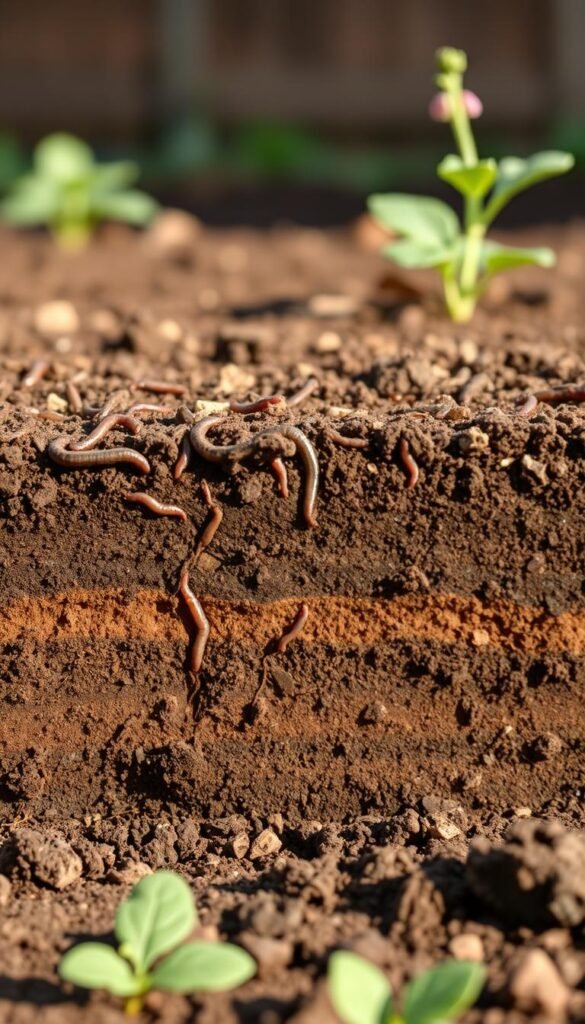
Want healthier plants without the backache? Skip the shovel and let smart tools do the work. No-till methods keep your garden’s underground cities intact while improving airflow and nutrient access. This approach works like a gentle upgrade—boosting fertility without wrecking what nature built.
Broadfork Aeration Methods
Meet your new best friend: the broadfork. This U-shaped tool gently loosens compacted earth using foot power—no flipping or mixing. Push the tines into your bed, rock backward, and repeat every 12 inches. Unlike tilling, this preserves vertical layers where fungi and worms thrive.
| Tool | Method | Impact |
|---|---|---|
| Broadfork | Creates air pockets | +25% root growth |
| Rototiller | Mixes soil layers | Kills 60% earthworms |
Sheet Mulching and Lasagna Layers Explained
Transform weedy patches into fertile zones with sheet mulching. Start by laying cardboard over grass, then pile alternating layers of compost, straw, and leaves—like building a lasagna. This smothers weeds while feeding microbes. Top with 3 inches of mulch to lock in moisture.
Key benefits:
- Eliminates 90% of weeds in 8 weeks
- Creates plant-ready beds in 3-6 months
- Reduces soil disturbance by 100% vs traditional methods
For best results, water each layer as you build. Earthworms will quickly move in, turning your “lasagna” into black gold. This no-dig magic works for raised beds, in-ground plots, or even balcony gardens!
Soil Regeneration in No-Dig Systems: Building Fertile Beds Over Time
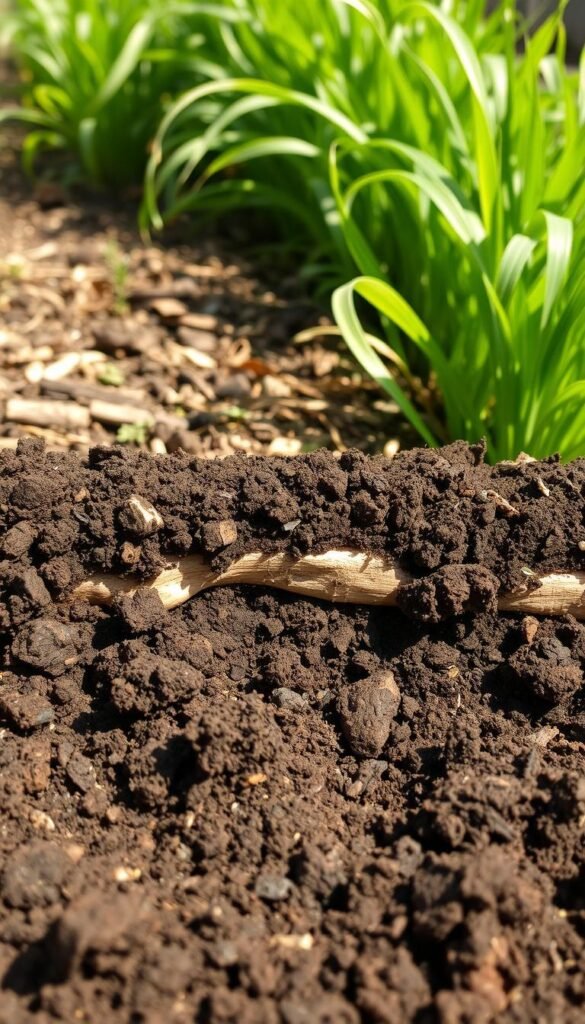
Think of your garden as a living, breathing organism that thrives when left undisturbed. By focusing on natural processes, you unlock hidden potential beneath your feet. Healthy earth becomes a powerhouse of nutrients and moisture, giving plants what they need to flourish.
Key Benefits of Rejuvenated Soil
Revitalized earth offers three game-changing advantages for growers:
| Aspect | Traditional Approach | No-Dig Method |
|---|---|---|
| Water Retention | Frequent watering needed | 50% less irrigation |
| Weed Control | Weekly weeding | 80% reduction |
| Nutrient Density | Annual fertilizer use | Self-replenishing system |
This approach creates a spongy texture that holds moisture like a reservoir. Plant roots dig deeper, accessing stored nutrients while resisting drought stress. You’ll also notice fewer pests as balanced ecosystems keep troublemakers in check.
Step-by-Step No-Dig Bed Preparation
Ready to try this? Follow these simple steps:
- Choose a sunny spot and mow existing vegetation
- Lay cardboard or newspaper to smother weeds
- Add 3 inches of compost as your base layer
- Top with straw or leaves for moisture control
- Transplant seedlings directly into the mix
For raised setups, check this step-by-step raised bed guide. Within months, earthworms will transform these layers into rich, crumbly earth. You’ll harvest bigger tomatoes, crunchier greens, and herbs bursting with flavor—all while letting nature handle the heavy lifting.
Improving Water Retention and Erosion Control
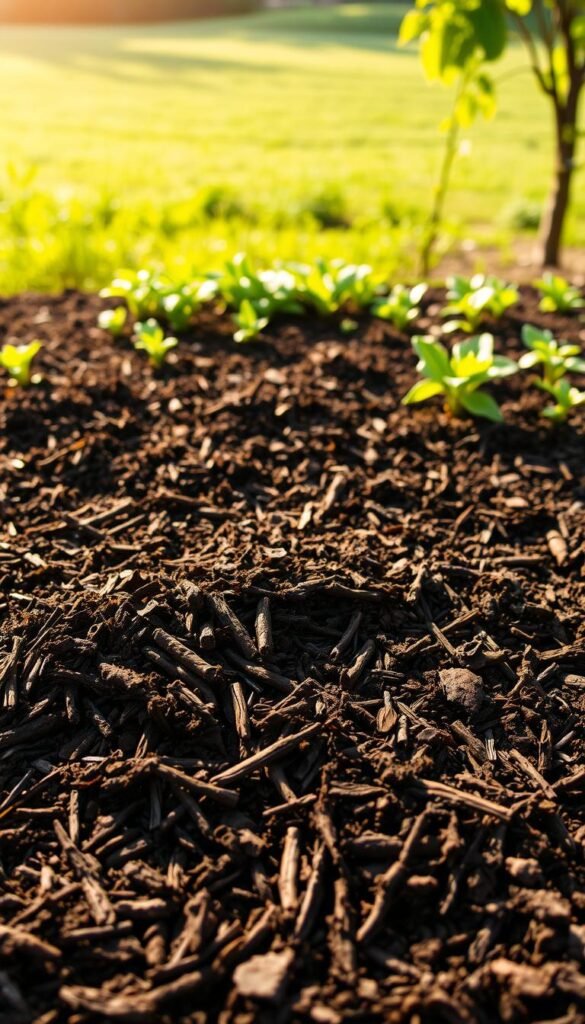
Picture your garden thriving even during summer droughts, thanks to smart water-saving techniques. Keeping moisture where plants need it most—while shielding earth from wind and rain—creates resilient growing spaces. Let’s explore two powerhouse methods that tackle both challenges effortlessly.
Mulching Strategies to Preserve Moisture
A thick mulch blanket acts like a thermostat for your garden. Organic materials like straw, shredded leaves, or wood chips slow evaporation by up to 70%. They also suppress weeds that compete for precious water.
Try these simple approaches:
- Spread 3 inches of bark chips around perennials
- Use grass clippings between vegetable rows (chemical-free lawns only)
- Layer cardboard under straw for extra weed-blocking power
Replenish mulch every season as it breaks down. You’ll notice plants stay hydrated longer between rains or watering sessions.
Using Cover Crops to Prevent Soil Loss
When beds rest between plantings, cover crops become living shields. Their roots anchor earth during storms, while foliage breaks wind speed. Popular options include:
| Crop | Season | Bonus Benefit |
|---|---|---|
| Crimson Clover | Cool | Adds nitrogen |
| Buckwheat | Warm | Smothers weeds |
| Winter Rye | Cold | Prevents nutrient leaching |
Mow or till plants before they seed, then let residues decompose. This green mulch feeds earthworms while boosting organic matter. Over time, you’ll create spongier earth that absorbs rainwater like a champ.
Together, these strategies slash irrigation needs and keep your garden’s foundation intact. Plus, they trap carbon underground—a win for your plants and the planet!
Integrating Compost, Cover Crops, and Organic Amendments
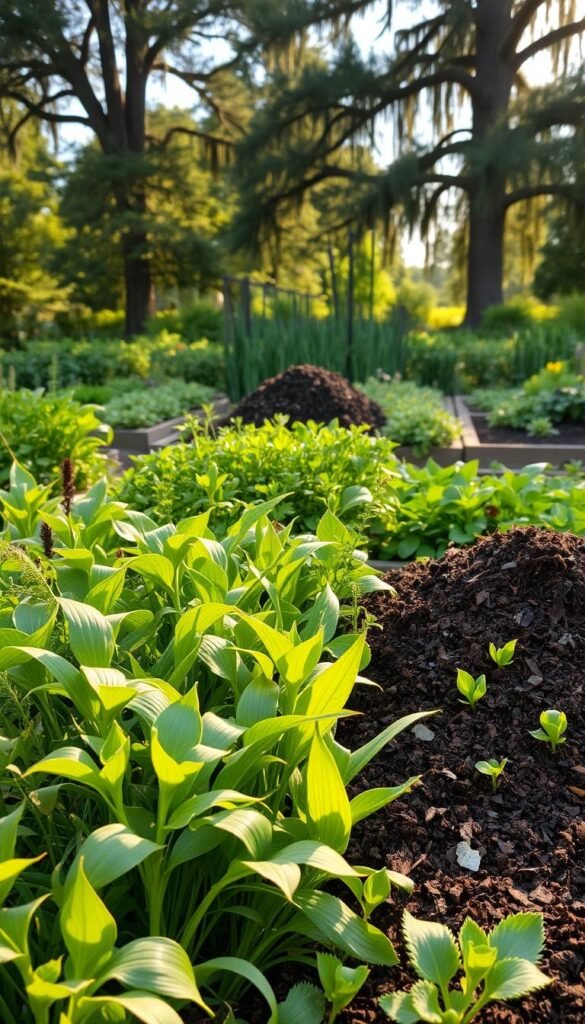
What if your garden could feed itself while you sit back? By blending compost, cover plants, and natural boosters, you create a self-replenishing buffet for your crops. This trio works like a well-oiled machine—recycling nutrients and building resilience season after season.
Nutrient Cycling with Cover Crops
Planting cover crops between growing seasons keeps your garden working overtime. Legumes like clover pull nitrogen from the air, while deep-rooted radishes mine minerals from subsoil. When cut and left as mulch, these plants:
- Add organic matter equivalent to 2 inches of compost annually
- Prevent erosion during heavy rains
- Create habitats for beneficial insects
| Cover Crop | Key Benefit | Best Season |
|---|---|---|
| Hairy Vetch | Nitrogen fixation | Fall/Winter |
| Buckwheat | Phosphorus release | Summer |
| Daikon Radish | Soil loosening | Cool seasons |
The Impact of Vermicompost and Worm Castings
Worm-produced compost is nature’s ultimate fertilizer. Studies show it contains 5x more available nitrogen than regular compost. Mix a handful into planting holes to:
- Boost seedling growth rates by 40%
- Increase microbial diversity in root zones
- Enhance water retention in sandy soils
Rotate crops annually to prevent nutrient depletion. Pair tomatoes with beans one year, then leafy greens the next. This strategy keeps your roots exploring fresh territory while maintaining balanced fertility.
Fostering Biodiversity and Ecosystem Benefits
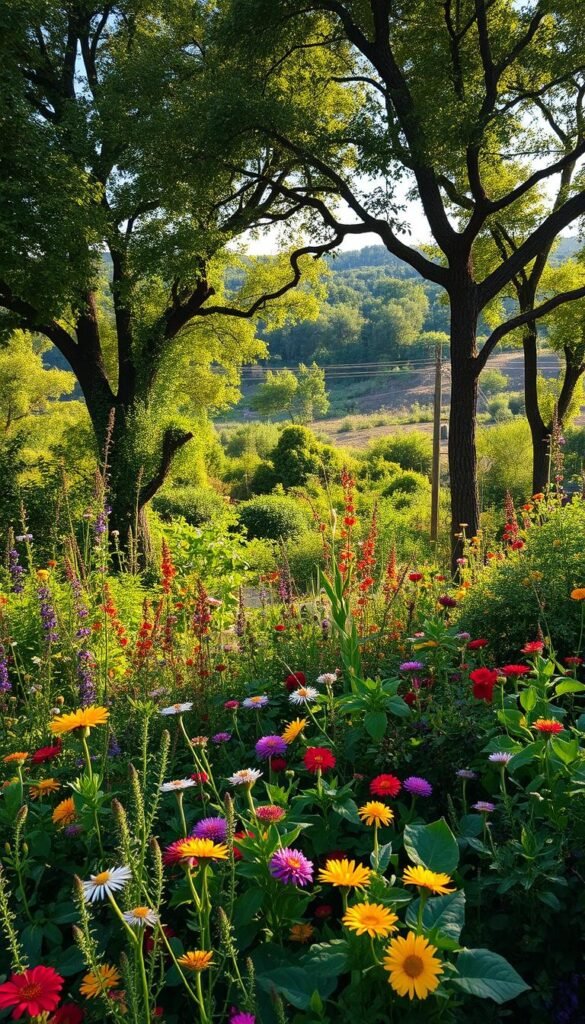
Your garden isn’t just a plot of land—it’s a living network where every organism plays a vital role. By nurturing this ecosystem, you create a self-regulating environment that naturally resists pests and diseases. Let’s explore how supporting underground allies and rotating crops strengthens this delicate balance.
Supporting Beneficial Soil Organisms
Earthworms, beetles, and fungi form nature’s cleanup crew. These tiny workers aerate earth, recycle nutrients, and protect plant roots. To keep them thriving:
- Leave some leaf litter as habitat
- Avoid synthetic pesticides
- Add compost tea to boost microbial growth
| Practice | Traditional Approach | Regenerative Method |
|---|---|---|
| Pest Control | Chemical sprays | Ladybugs & nematodes |
| Fertility Source | NPK fertilizers | Mycorrhizal fungi networks |
| Weed Management | Herbicides | Ground beetles & mulch |
Enhancing Plant Health Through Diverse Crop Rotations
Switching crop families yearly confuses pests and prevents nutrient depletion. Try this 3-year rotation:
- Year 1: Tomatoes (heavy feeders)
- Year 2: Beans (nitrogen fixers)
- Year 3: Leafy greens (light feeders)
This strategy breaks disease cycles while building healthier plants. A University of Minnesota study found farms using crop rotation needed 75% fewer fungicides. Your garden becomes a vibrant tapestry where each species supports the next—no chemicals required.
Closing Thoughts on Your Journey to Regenerate Soil
Your garden’s transformation begins with one simple choice: working with nature rather than against it. By embracing regenerative practices, you’re not just growing plants—you’re cultivating a living foundation that sustains itself year after year.
Improving soil health takes patience, but the rewards multiply with each season. Healthier crops, better moisture retention, and fewer weeds emerge naturally as organic matter accumulates. Even small steps—like adding compost or planting cover crops—create ripple effects across your land.
Remember, every layer of mulch or cardboard sheet builds fertility without disrupting delicate underground networks. These methods reduce water use while locking carbon into the earth—a win for your gardening goals and the planet.
Ready to start? Try one technique this week—whether refreshing beds with compost or experimenting with no-till planting. Your future harvests will thank you as roots dig deeper into thriving, resilient ground.
